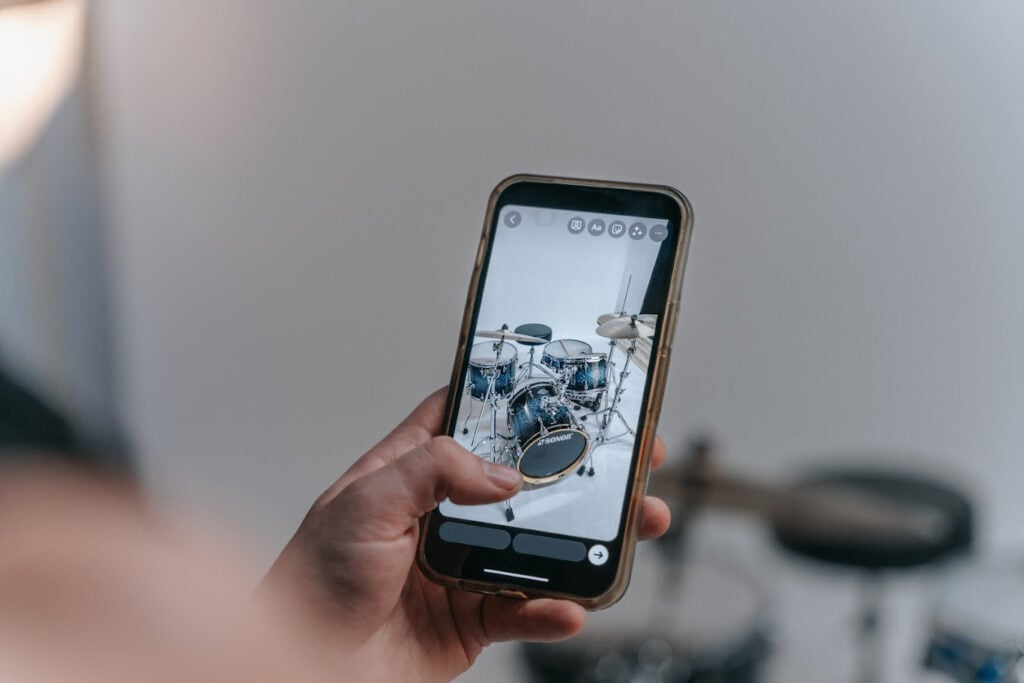
We know how much time and money we invest in our gear, but what happens if disaster strikes? What if some lowlife steals your stuff? That’s where instrument insurance comes in.
In this article, we’ll guide you through the ins and outs of insuring your beloved drum set (and more).
Before you start your search, check if your existing homeowners or renters insurance includes coverage for musical instruments. Some policies may include musical instrument coverage as part of their standard package, but make sure you understand the limitations and whether it meets your gear’s value and needs.
According to Laura Donelan, VP Program Manager at MusicPro Insurance, “the most popular misconception about instrument and equipment insurance is that it is covered on a homeowner’s or renter’s policy.”
It’s worth looking for a policy that’s tailored to musicians. Your current all-around insurance might be invalid the second you remove your gear from your home or car.
Specialized policies often provide coverage for theft, accidental damage, and even loss during gigs or while in transit. They’re designed to meet the unique needs of musicians: your gear might be stationary, or you might fly with it around the world. You might also regularly borrow or rent equipment – and what then?
Make sure you understand what’s included in your coverage and where you might need to purchase an add-on. Does the policy only cover a fixed location, or does it protect your gear at gigs and with questionable airport baggage handlers?
When looking for drum insurance, you should compare quotes from multiple insurance providers. Rates can vary a lot based on factors like the value of your gear, your location, and the type of coverage you need.
But according to Donelan, it’s not as expensive as you might think – for example, MusicPro’s insurance starts at $175 per year.
Reach out to different insurers, online or locally, to get a sense of what your options are and find the best deal for your specific situation. You might find that the first one you call isn’t necessarily the best.
Your premium is the monthly or annual fee you pay to keep your insurance valid.
The cost of drum insurance can vary depending on several factors, including the total insured value of your drum kit, your location, and the type of coverage you choose. Donelan confirms that at her agency, “premiums are based on the exact total of the itemized list provided by the client. My rates are just a little over 1%, and yes that’s per year.”
A deductible is the amount you need to pay out of pocket when you file a claim before your insurance coverage kicks in. While choosing a higher deductible can lower your premium, it also means you’ll need to cover more expenses in the event of a claim.
Strike a balance that aligns with your budget and risk tolerance.
Examine your insurance policy for any coverage limits. Some insurance plans might have a maximum payout per item or per claim. Make sure these limits align with the value of your drum kit and your expectations for coverage.
If the value of your equipment exceeds these limits, you might need to upgrade your plan.
There are a ton of situations that insurance doesn’t cover, so make sure you know exactly where coverage ends. For example, normal wear-and-tear and manufacturer defects aren’t your insurer’s responsibility. And if you lend your gear to a friend and they lose or damage it, well, unfortunately your insurance won’t likely cover that either.
Climate damage that could suggest neglect (like mold or rust) is also on you.

When discussing coverage with your insurance provider, you’ll need to itemize and document everything. This means listing each piece separately, including drums, cymbals, hardware and accessories, along with what each piece is worth.
Make sure you’re maintaining good records, keeping receipts, taking photos, and writing down serial numbers of your drum set and its components. This documentation provides evidence of your gear’s value and helps you receive fair compensation in the event of theft, damage, or loss.
As your drum kit evolves or increases in value due to upgrades or additions, don’t forget to regularly review and update your insurance coverage accordingly. Keeping your policy up-to-date ensures that your gear remains protected, and you won’t find yourself in financial trouble in case of a mishap. Your insurance provider might have a section on their website where you can go in and make changes to your inventory.
As musicians, we have a lot of precious and expensive equipment we need to protect, whether it’s the instrument itself or auxiliary technology like computers and other electronic devices we use to make music.
If you’re reading this, you’re already thinking about instrument insurance – don’t put it off. Better safe than sorry!
Samantha Landa currently drums with Conquer Divide and has been featured by outlets such as Sick Drummer Magazine and DRUM! Magazine. Sam proudly endorses Mapex Drums, Sabian Cymbals, Evans Drumheads and Los Cabos Drumsticks.


By signing up you’ll also receive our ongoing free lessons and special offers. Don’t worry, we value your privacy and you can unsubscribe at any time.
We use cookies for traffic data and advertising. Cookie Policy »